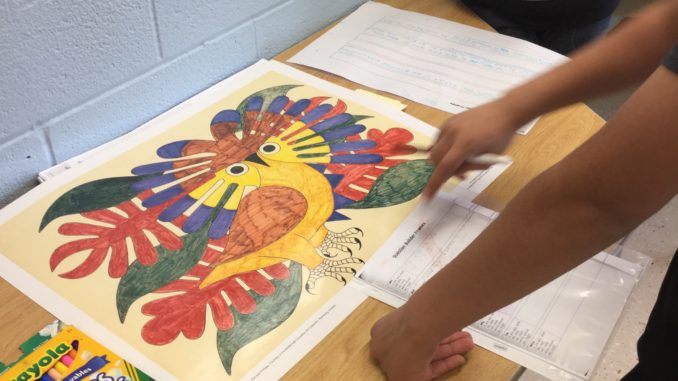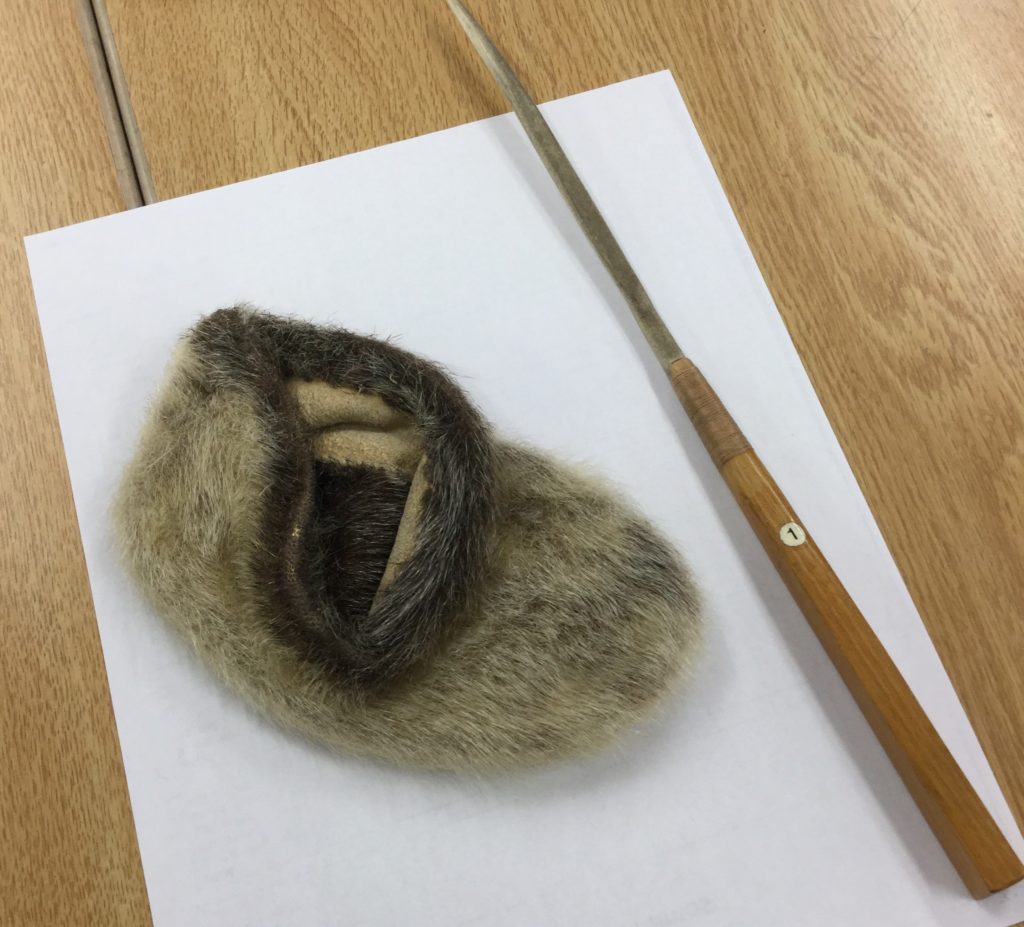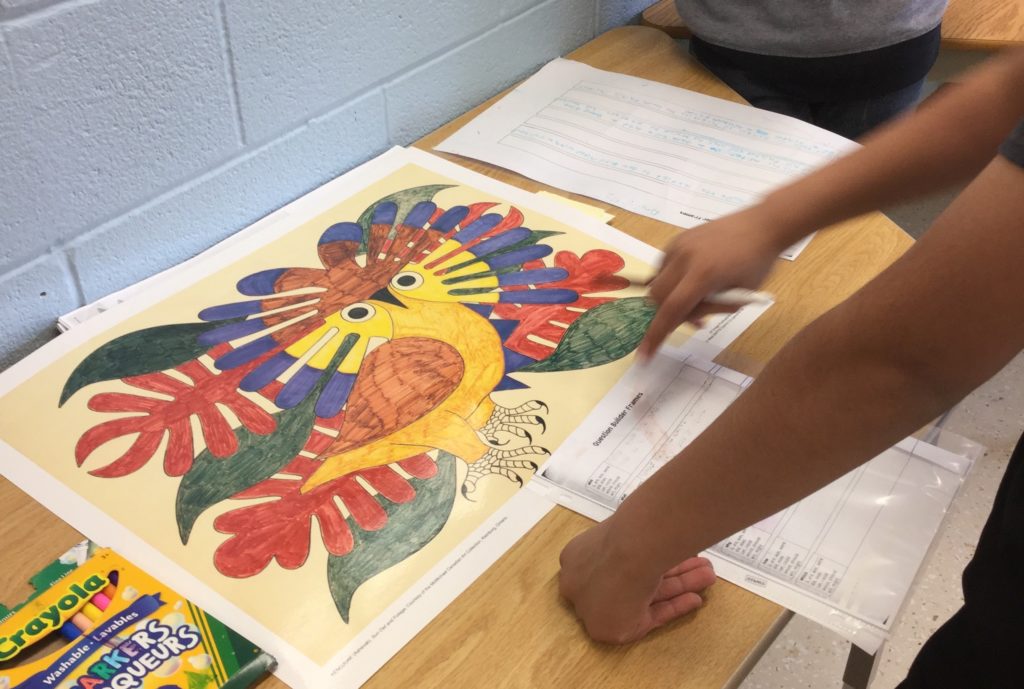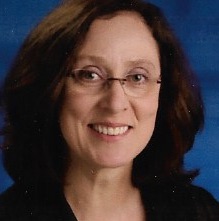
This article is based on a paper submitted by the author to the Treasure Mountain Canada 4 research symposium, held in Toronto in 2014.
Teacher/Teacher-Librarian Collaborative Inquiry: Exploring Aspects of the Inuit Way of Life
By Lisa Ainsworth
Background
Stephanie Kornbluth, a grade 5 teacher, and Lisa Ainsworth, teacher librarian, embarked on a collaborative inquiry project focusing on assessment for learning and an exploration into some aspects of the Inuit way of life. The project was implemented at Great Lakes Public School in Brampton within the Peel District School Board.
Learning Goals
The starting point for the project was to identify goals for professional growth and improved student learning as summarized below:
- Explore different collaborative co-teaching and co-assessment models for the project and be flexible about their use.
- Document the success of various assessment strategies for an inquiry based project.
- Integrate aspects of the revised Ontario Curriculum for Social Studies, Grades 1 to 6, History and Geography, Grades 7 and 8 (Government of Ontario, 2013).
- Build the schema of grade 5 students regarding aspects of the way of life of the Inuit.
- Strengthen the questioning and inquiry skills of grade 5 students.
Planning the Project
Collaborative Co-teaching Models
At the start-up meeting, the teacher and teacher librarian used a professional resource entitled, Collaboration and Co-Teaching: Strategies for English Learners (Honigsfeld and Dove, 2010), to identify various co-teaching models, consider the advantages of each, and how each might benefit the students. Two different models were selected. First, the “One Group” model was selected for teaching lessons on questioning. This model allows for one lead teacher and one teacher teaching with intended purpose (Honigsfeld and Dove, 2010). Second, a modified version of the “Two Groups” model was chosen to teach a lesson on introducing artifacts and art prints. This model involves each teacher teaching a smaller group, half the class in this case, developing the same skills but with different content.
Resources
The teacher and teacher librarian reviewed the overall and specific curriculum expectations from The Ontario Curriculum for Social Studies, Grades 1 to 6, History and Geography, Grades 7 and 8 (Government of Ontario, 2013) and grouped several skills and expectations related to formulating questions, gathering and organizing data, and understanding context.
The teacher decided to teach several mini-lessons on “What makes a good question?” while the teacher librarian reviewed picture books that may capture some aspects of the Inuit way of life.
The question builder frames black line master from Q Tasks (Koechlin and Zwaan, 2014) was deemed to be a useful scaffolding device for students. The frames handout was enlarged to a 11’ X 14” size and laminated so that students could reuse the frames throughout the project. A rubric was selected and revised for formative assessment purposes and to guide students to an understanding of the characteristics of a good question. Some success criteria were developed and written on chart paper to be displayed in the class and library.
The picture book Mikissuk’s Secret (Lafonta, 2006) was determined to be an interesting story that would allow students to practice writing questions arising from a literary work. This book about an older brother and his younger sister provides details on hunting and related tools of the Inuit in both the text and images. A short video on challenging vocabulary was made by the teacher librarian using Adobe Spark. The video was posted on the class blog three days in advance of the lesson. Students were asked to view this at home and ask any questions at school prior to the initial lesson. The teacher librarian believed that this small initiative would introduce the class to a flipped classroom activity and take advantage of a well-established classroom blog.
There was also a desire to create hands-on lessons that would engage student learning in a new way. Therefore, a group of visual arts prints from Art Image were assembled which captured traditional and modern Inuit artwork. Two sets of authentic Inuit artifacts were ordered from the Royal Ontario Museum (ROM) – The Inuit Men and the Inuit Women Resource Boxes.
The second book chosen, entitled Kamik: an Inuit Puppy Story (Uluadluak, 2012), is a picture book that focuses on the training and relationship of dogs and humans within the Inuit culture. This book was used as an opportunity for students to revisit their questioning of a literary work and choose their best question. The intent of this final activity was to facilitate more independence by those who were ready while continuing to provide assistance for those needing support.
Teaching
Day 1 – Mikissuk’s Secret Read Aloud – Practice Writing Questions based on a Literary Work
On Day 1, the entire class came to the library for a read aloud of Mikissuk’s Secret. The teacher librarian acted as lead teacher while the classroom teacher answered questions or helped to solve problems as they arose (teaching with intended purpose). After reading students were asked to share connections they had with the story to generate ideas. They were then given 10 minutes to write questions using their question builder frames. They were then asked to share their question(s) with a partner and notice how their partner responded. Did a discussion occur? Was the question thick or thin? Did the student rethink their question as they read it out loud to their partner and rewrite or rephrase it as a result? This process began the feedback loop designed to move learning forward as described in Making Classroom Assessment Work (Davis, 2011).
After a break, the book was read aloud once again to students while they were seated in table groups. During this time, students wrote questions while listening. They were also given copies of Mikissuks’ Secret at their tables so that they could examine the text and images more closely. The groups were encouraged to carry out a picture walk of the book so that the whole group could review the images.
Students were given an opportunity to share and discuss their questions providing peer feedback. After reviewing the rubric, students were asked to choose their best question. Using a class voting system – thumbs up if we agree, sideways if we don’t quite agree – students posted their questions as thick or thin and received suggested improvements from the class.
Throughout the lesson, students were given many opportunities to assess their questions by comparing their work to the success criteria and determining the next steps for their own learning. An exit ticket was given to each student so that they could not only reflect on what they had learned that day but also something that they might like to learn next.
Findings
Advantages with the “One Group” Model of collaborative teaching were as follows:
- With two teachers, there was an increased opportunity to give feedback during the lessons, conversations, and observations during student work time, e.g., relevant feedback in the moment
- The observation and conversation components of the triangulation of evidence were enhanced
- The teacher and teacher librarian listened to more student conversations and observed more of the process and work which enabled them to intervene or revise their approach as necessary
- The teacher and teacher librarian participated in student conversations when appropriate often prompting further thinking
- Since there was an increased monitoring of the student work, lessons were revised on the spot for the benefit of students while the learning was in progress
- Differentiation of instruction occurred as personalized attention increased for all learners
The feedback loop used to move the learning forward allowed students to:
- Build their confidence over three feedback opportunities
- Consult with a peer, share with the class and evaluate their questions on their own
- Experience the teacher as a guide rather than the final say
- Receive assessment for learning throughout the process
- Receive feedback in the moment allowing immediate redirection or improvement
- Create a bank of anchor questions for future reference
- Use an exit ticket to consolidate their thinking and prepare for the next day
Days 2 and 3 – Using Artifacts and Visual Arts Prints
Artifacts Lesson
On Day 2, the teacher divided the class into two groups and kept one group to work with the artifacts borrowed from the ROM.
The artifacts were displayed on the classroom tables (Figure 1). Students were invited to walk about the objects while receiving prompts from the teacher, such as:
- What have we learned so far this year in Social Studies that might help you compose a question?
- What inferences can you make about each item? Can you use this in your question?
- Try answering your own question. Is it thick or thin?

After approximately 10 minutes of independent thinking time, students joined groups of 2 to 3 students to walk around the artifacts and to create additional questions while supported by their peers. Groups eliminated their “thin” questions and ultimately chose their “best” question writing it on a sticky note. Each student then shared their question with the class and placed it on an enlarged version of the rubric. Opportunities were provided to improve questions. At the end of the session, the actual use of the Inuit artifacts was shared with the students. Before leaving for the day, students were also asked to fill out a reflection that asked students to summarize their learning in 25 words. This allowed students to capture an important idea about their learning while being concise.
“Best” questions and reflections were collected by the teacher and specific written feedback was given to each student the following day to further improve their questioning for the next round. This group would go on to generate questions on visual arts prints the next day (Day 3).
After debriefing with the teacher librarian, the teacher thought it might be more efficient to share the use of the Inuit artifacts with the students at the beginning of the lesson with the second group. Students were still given 10 minutes to explore the artifacts but before they wrote their questions, they discussed the purpose of the artifacts. This eliminated generic questions such as What is it made of? and What is it used for?.
Findings
Using the Inuit Men and the Inuit Women Resource Boxes from the ROM allowed students to:
- Participate in a unique, hands-on experience
- Work with authentic Inuit objects
- Discover how the artifacts are used and whether they are still used in modern times and if so how have they changed? (e.g., new materials used)
An increased level of focus as well as the active discussion and curiosity of all students showed that student engagement was strong.
The teacher and teacher librarian wondered if viewing the artifacts in an authentic setting such as the ROM itself would add to the excitement of the learning. Also of note is the type of questions that were asked about the artifacts. The questions were of an inquiry nature whereas the questions arising from Mikissuk’s Secret were both discussion and inquiry questions. Since this was not anticipated the rubric was sometimes awkward to use. It is thought that teachers need to decide if students’ questions need to be inquiry or discussion questions up front. It would be valuable to develop a separate rubric for each question type.
Art Prints Lesson
Meanwhile, the second group came to the school library to explore the Art Image art prints (Figure 2).

The Art Image prints were placed in various locations throughout the library. Students were shown each of the 10 prints and were given prompts similar to those used for observing artifacts.
They were then invited to go to an art print that somehow spoke to them. The students began by talking about the print with other students that chose the same print. Again, students generated questions, eliminated thin questions, and shared their best question with the class. Before leaving class, students filled out a reflection summarizing their learning. This group would go on to generate questions on Inuit artifacts the next day (Day 3).
Findings
Using the Art Image art prints allowed students to:
- Participate in a unique, hands-on experience
- Observe authentic Inuit prints
- Connect with prints that “spoke” to them
- Move around the library
- Allow comparison between the artworks, e.g., finding owls in the art and asking questions about the significance of colour
An increased level of focus, as well as the active discussion and curiosity for all students, showed that student engagement was strong.
As was the case with the artifacts, the art prints generated more inquiry questions as opposed to discussion questions.
Advantages with the “Two Groups” Model of collaborative teaching were as follows:
- Smaller groups allowed the teacher/teacher librarian to focus on those students that required assistance
- Allowed for differentiated instruction
- Enabled the building and expanding of vocabulary and background knowledge
- Two separate spaces allowed students to move around and use the space
- Provided teachers with an opportunity to adjust their lessons between groups to improve on student learning based on their debrief
- Able to follow through with the feedback loop to move the learning forward
Although the smaller student groups were an asset, teachers must continue to be mindful of the groupings and the fact that less students may pose some challenges such as less ideas being shared or a student being left out.
Day 4 – Kamik: an Inuit Puppy Story Read Aloud –Writing Questions with Some Support
On Day 4, the entire class revisited the library for a read aloud of Kamik: an Inuit Puppy Story. After reading, students were asked summarize the beginning, middle, and end of the story to ensure comprehension. They were also asked how the story compared to Mikissuk’s Secret and how the two stories illustrate the Inuit way of life.
Afterward, students wrote, shared, and assessed their questions based on their partner’s response. By this point, most students were able to assess their question based on their partner’s response. Did the question make sense when read out loud? Did a discussion occur?
Student were then given copies of Kamik: an Inuit Puppy Story so that they could examine the text and images more closely. Students were given an opportunity to share and discuss their questions with their groups but eventually choose their best question to submit to the teacher and teacher librarian for assessment. The intent was that this final lesson on writing questions would be done more independently by those that were ready while still providing assistance for those needing support.
Findings
Kamik: an Inuit Puppy Story is a picture book that reminds children the importance of patience, elders, and the loyalty and comfort a pet can provide to humans. In addition, the book gives us a view into contemporary Inuit culture and every day way of life.
There was difficulty among some students in understanding the relationship between the puppy and the various family members. Some students were puzzled with the family generations. For example, the grandparents were present but the parents of the young boy were not. The students were unsure about the role of the men versus the women in raising and caring for the dogs.
The teacher and teacher librarian recommend using Kamik: an Inuit Puppy Story on Day 1 for the initial lesson where more opportunity for discussion was given. Mikissuk’s Secret would be a better choice for the final lesson as it encompasses more of the Inuit way of life, even showing some of the artifacts that were contained in the resource boxes from the ROM. In addition, the students may have more connections to Mikissuk’s Secret as the main characters are brother and sister and many of the students have siblings or an understanding of sibling relationships. This would allow for deeper discussion and richer questions.
At this point, students had been exposed to the process of writing questions many times. There was evidence that they were more at ease in applying their learning. However, they were also showing signs of fatigue in using the question builder frames and rubric, and in obtaining feedback from the other students. It is recommended that the number of steps for sharing be reduced. Signs of tiring of the reflection tools had been noted earlier and, therefore, a reflection was not required for this lesson.
Assessment
Day 5 – Reviewing and Debriefing Assessment
On Day 5, the teacher and teacher librarian reviewed all observations, questions, and reflections to assess student learning and evaluate the assessment practices.
The formative assessment for this project occurred in the following ways:
- Feedback to move the learning forward used by students (e.g., rubric, specific written and oral feedback)
- Conversations between peers, small groups, teacher, and class
- Observations by teachers
- The consolidation tools used by students (e.g., exit ticket, 25 word reflection)
- Specific written feedback by teachers
- A grading of a selected “best” question by teachers for students
Findings
Successes related to the assessment for this project were noted as follows:
- Triangulation of evidence – observation, discussion, and product – provided rich and varied data to assess learning
- The rubric, success criteria, and question builder frames allowed students to scaffold learning, support each other, and improve question writing
- Sharing with a partner, small group, and class offered support and required that students were engaged in accountable talk
- Small groups allowed for teachers to make observations and listen carefully to student conversations
- Teachers took advantage of teachable moments to redirect learning and enhance instruction
- Both teachers and students gave feedback that was relevant and timely, increasing student confidence
- Students referred to the specific written feedback from teachers when writing new questions
- Students could see and track their own progress and the quality of their questions
- Students used the reflections to consolidate their thinking and prepare for the next day
- The assessment process could be replicated for most inquiries
- Allowed for the teacher and teacher librarian to meet, debrief, and moderate together
Although the last question the students submitted was the one that the teacher and teacher librarian placed on the rubric, it wasn’t necessarily the students’ best question. This confirms the importance of the entire process and the collection of a variety of data, i.e., triangulation of evidence.
Conclusion
The collaborative inquiry was successful in meeting the established learning goals. Enhanced professional growth was achieved as two different co-teaching models were explored and implemented. Working collaboratively, the teacher and teacher librarian met, debriefed, moderated, and learned together.
In addition, two teachers with one class, or at times, one teacher working with a smaller class grouping, allowed more immediate feedback during student work time. Students received differentiated assessment, moving them forward to assess their own work and identify next steps in their learning. The teachers collected rich and varied assessment data to enhance the conversation and observation components of the triangulation of evidence. Students were given more opportunities to share their learning and feel more confident over the course of the inquiry.
The collaborative inquiry project contributed to student success by providing multiple opportunities to receive useful feedback and revise work in in relation to the set criteria. In addition, by including authentic artifacts and visual arts prints in the lessons, students were fully engaged in the curriculum through hands-on learning. Continuing to use the classroom blog to preview information for the next day was informative and enjoyable for students. The schema of grade 5 students regarding aspects of the Inuit way of life expanded through the use of interesting picture books, authentic artifacts, and art prints while their inquiry skills were strengthened.
References
Davis, A. (2011). Making classroom assessment work (3rd ed.). Courtenay, BC: Connections.
Honigsfeld, A. and Dove, M. G. (2010). Collaboration and co-teaching: Strategies for English learners. Thousand Oaks, CA: Corwin.
Koechlin, C. and Zwaan, S. (2014). Q tasks (2nd Ed.). Markham, ON: Pembrooke.
Lafonta, I. and Barroux, S.Y. Mikissuk’s secret. (2006). Toronto, ON: Scholastic Canada.
Uluadluak, D. (2012). Kamik: An Inuit puppy story. Iqaluit, NU: Inhabit Media.
Resources
Art Image Publications. www.artimagepublications.com
Government of Ontario. (2013). The Ontario Curriculum – Social Studies, grades 1 to 6, History and Geography, grades 7 and 8. www.edu.gov.on.ca/eng/curriculum/elementary/sshg-18curr2013.pdf
Royal Ontario Museum. www.rom.on.ca/en/learn/travelling-programs/travelling-edukits/resource-boxes
 Lisa Ainsworth is a teacher librarian with the Peel District School Board (PDSB). She has taught in the primary, junior, and intermediate divisions. Lisa has facilitated workshops in the areas of assessment for learning, inquiry in the library learning commons, and identity texts for English Language Learners. Lisa holds a Bachelor of Applied Arts in Urban and Regional Planning from Ryerson University, a Bachelor of Education from OISE, University of Toronto, and a Master of Geography degree from the University of Guelph.
Lisa Ainsworth is a teacher librarian with the Peel District School Board (PDSB). She has taught in the primary, junior, and intermediate divisions. Lisa has facilitated workshops in the areas of assessment for learning, inquiry in the library learning commons, and identity texts for English Language Learners. Lisa holds a Bachelor of Applied Arts in Urban and Regional Planning from Ryerson University, a Bachelor of Education from OISE, University of Toronto, and a Master of Geography degree from the University of Guelph.